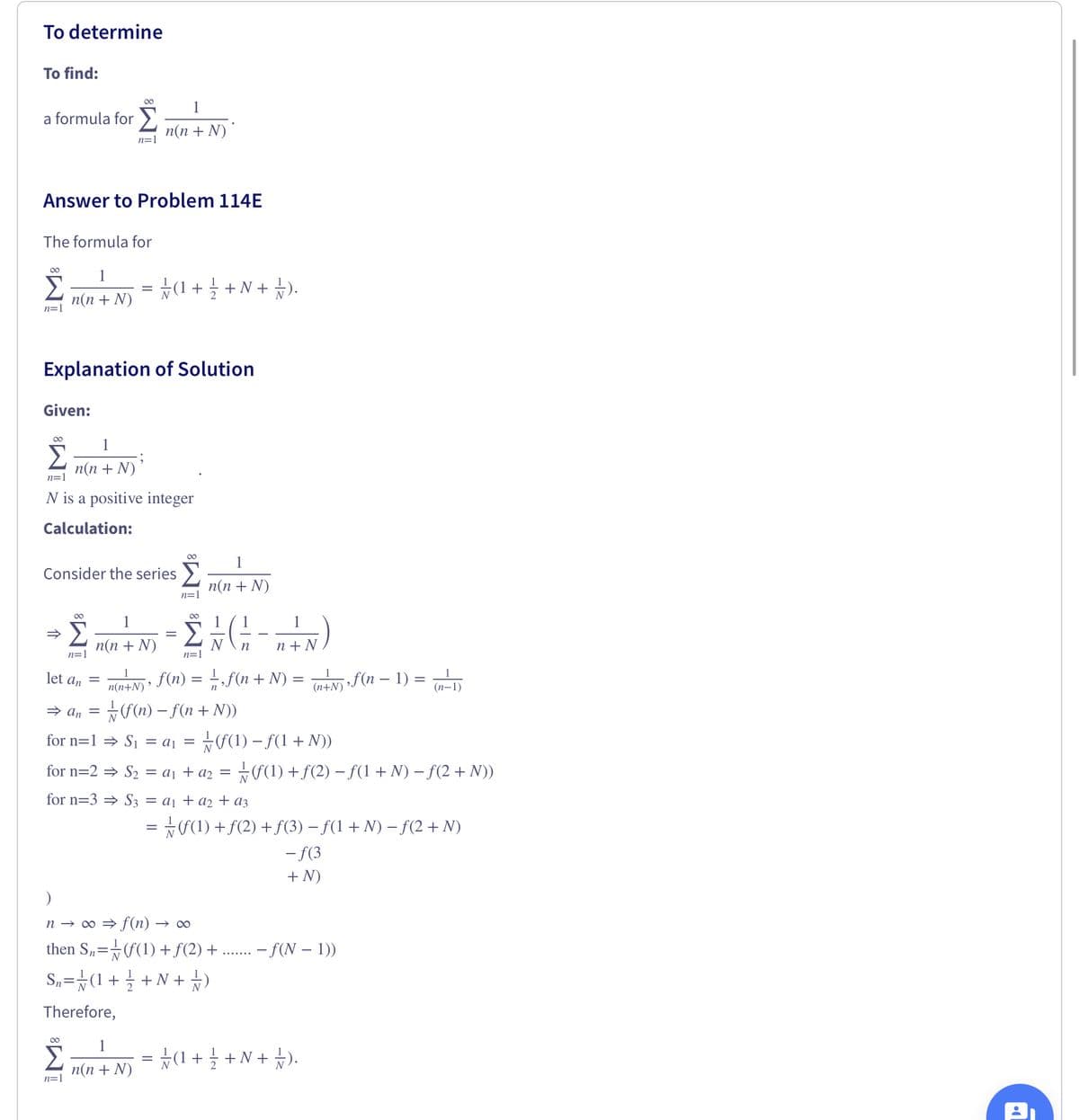portion
I've looked at the existing answer to this question already but it doesn't quite make sense to me.
First, when I plug in a random positive integer for N, the formula given as the answer to this problem doesn't produce the same outcome as when I plug the summation into an online calculator.
Second, I'm having a hard time understanding how we can limit the answer formula to a set number of parts for all possible positive integers of N. Is it not that for all N, the inner portion of the by parts equation 1/N[f(n)-f(n+N)] when put into summation would have all values from f(1) to f(N) and also have N number of remaining portions at the end uncanceled? How can this be simplified to work for any N?
I think I have a difficult time reasoning with infinity so perhaps that's where the issue lies. Any help would be greatly appreciated, Thank You!

Trending now
This is a popular solution!
Step by step
Solved in 2 steps with 2 images




